From the Riverbank Week 1: A Challenging Surface
May 4, 2021
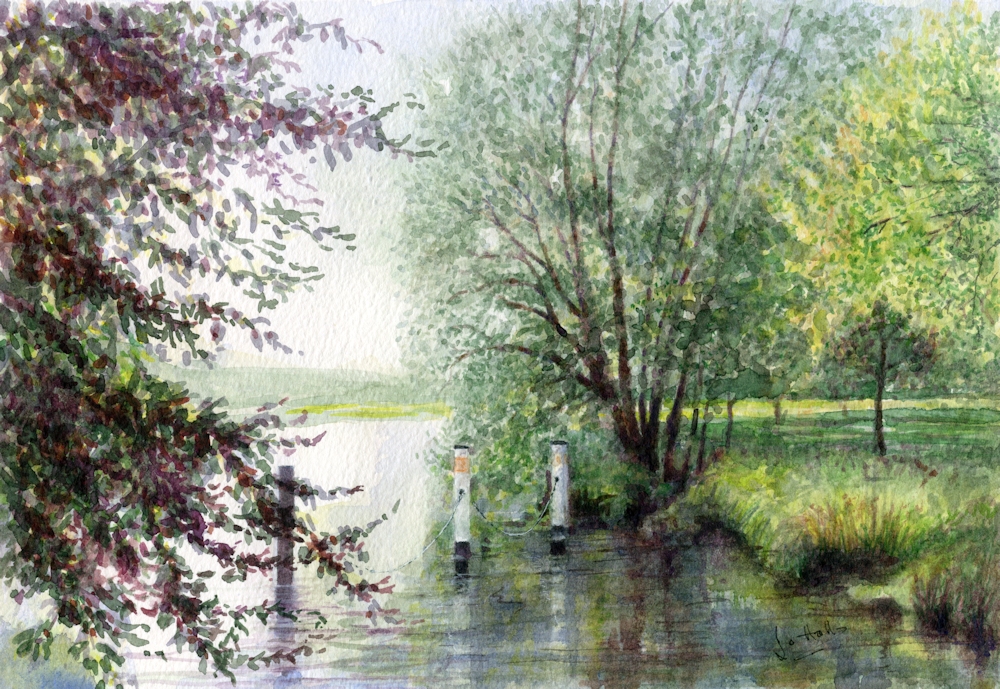
Watercolour
Over the next six weeks we’ll be drawing and painting anything that can be seen from a riverbank. The first session will be online but if you do have the opportunity to sketch your subject by the river and paint afterwards that would be brilliant. We’ll start by considering water, waves and reflections and go on to explore the riverbank vegetation, birdlife, bridges, weirs and locks that can be seen locally.
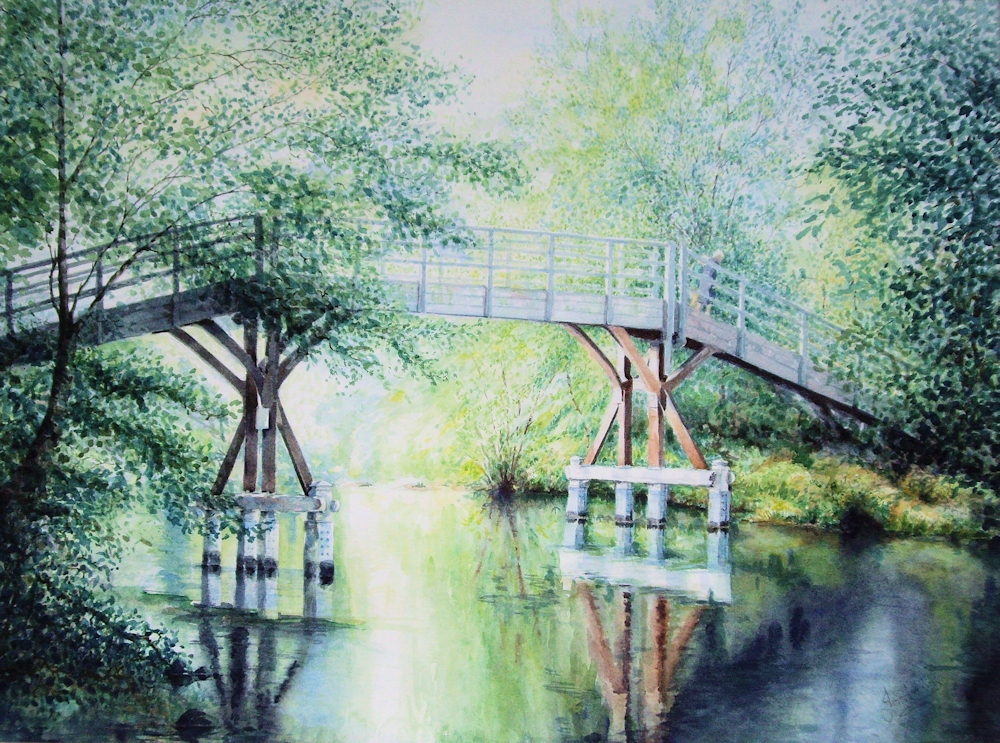
Watercolour
Some words that sprang to mind when thinking about water were flowing, calm, reflection, spray, fierce, roar, crash, wet, wave, ripple, current, whirlpool, eddy. By the Thames locally, the extremes in appearance of water going over the weir at Maidenhead and the wonderful reflections of trees in the very calm water that can be seen from the towpath just a couple of hundred yards upstream, reveal what a varied and challenging subject this is.
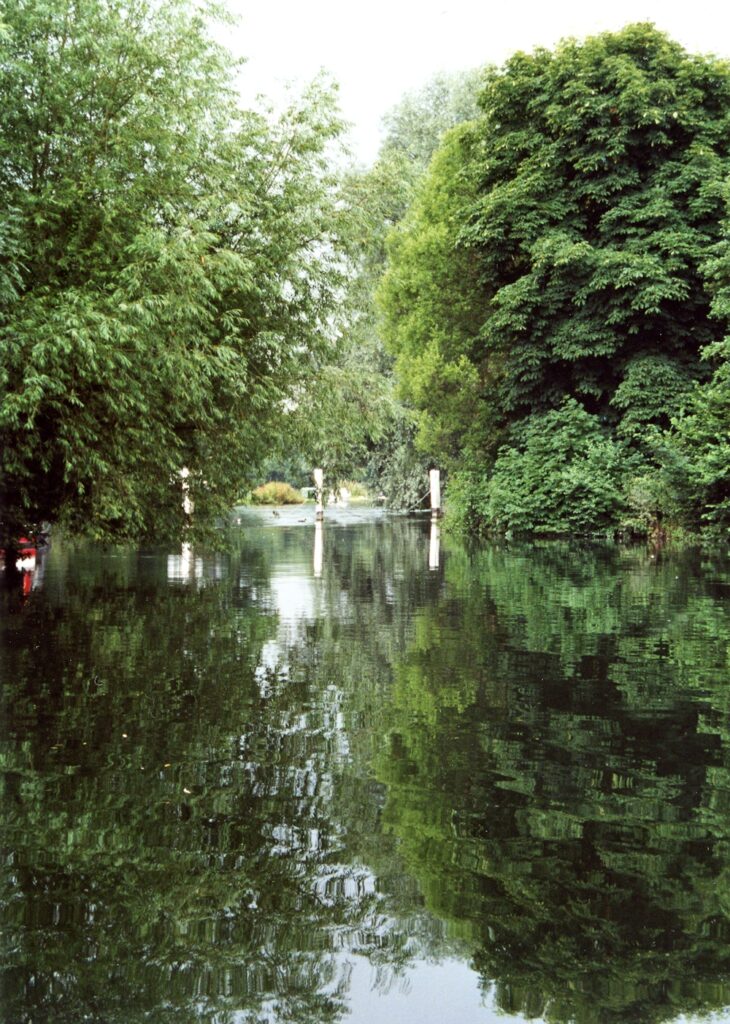
Photo
Large ripples in foreground give very distorted reflections.
See how little patches of sky are reflected and the large tonal differences in this picture: the palest areas are the small poles in the middle distance and the darkest are in the trees and their reflections.
We may often notice the reflections of boats, trees, poles etc. in and on the water but the sky is perhaps the most important element, being reflected not only in calm water but in every ripple and almost always brings an element of fleeting and shimmering light to the surface. The Impressionists found good ways of depicting this, using strokes of different colours and tones alongside each other to create shimmering effects.
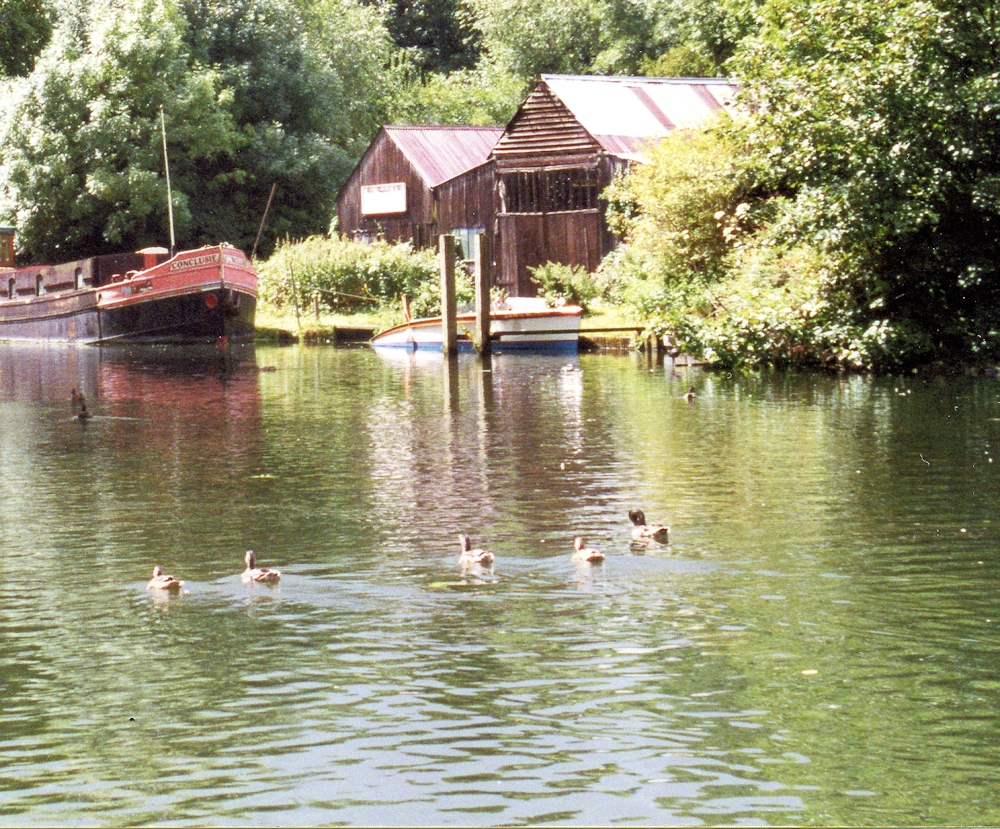
Photo
Criss cross ripple patterns in the wake of the ducks.
Ripples appear smaller in the distance and eventually look like a shimmering tone on the water.
If you can, get to a riverbank and watch the water. Better still make some sketches of what you see. Take two L-shaped pieces of card with you so you can use them as a view finder. These are more versatile than a camera as they enable the isolation of very tall thin slithers of the landscape or extreme panoramic views, as well as squarer and more conventional landscape shapes for your composition. In the sketchbook try several small sketches in different formats concentrating on the shape and tones of what you see.
If you can’t get out this week try exploring different compositions within one photo reference.
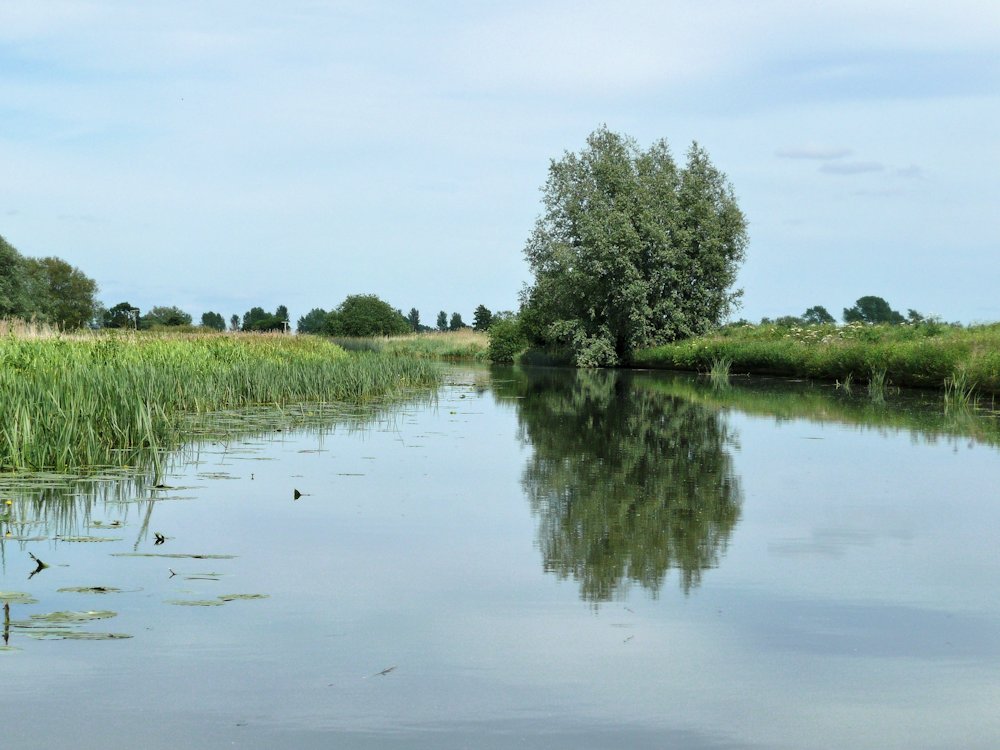
Photo
The following images were all cropped from this one photo. You may like to do something similar; crop a reference photo in different ways and make a tonal sketch of each. Choose the most successful for your painting. Choosing and isolating the elements you wish to paint is an important part of painting outside and why a sketchbook is invaluable to try out different composition ideas. I was amazed at what lay hidden in this reference taken mainly for the very subtle cloud cover and its reflection.
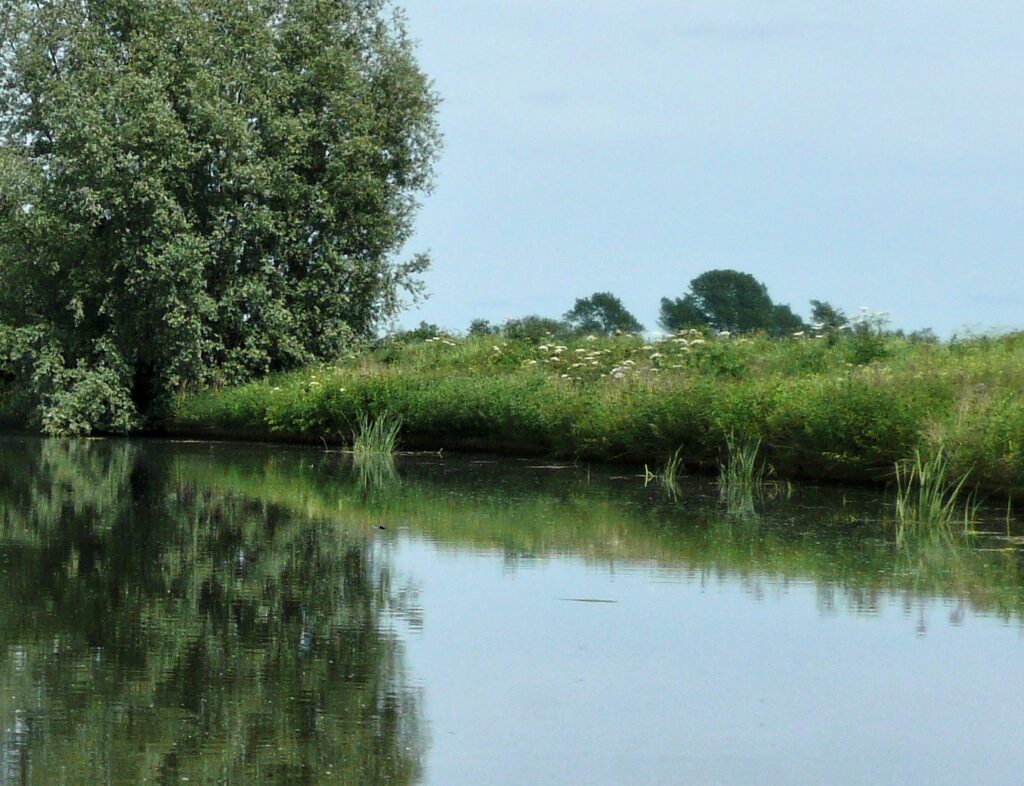
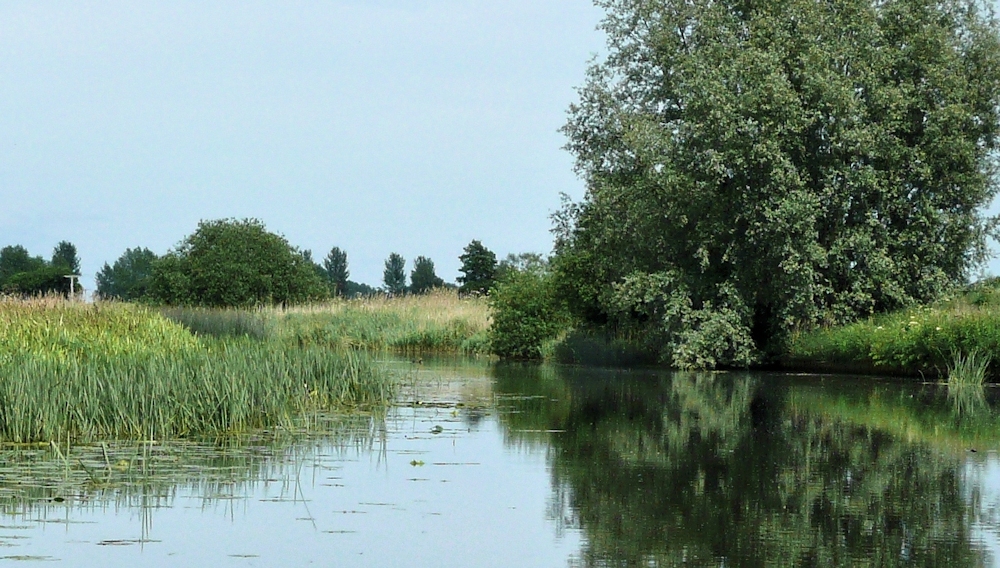
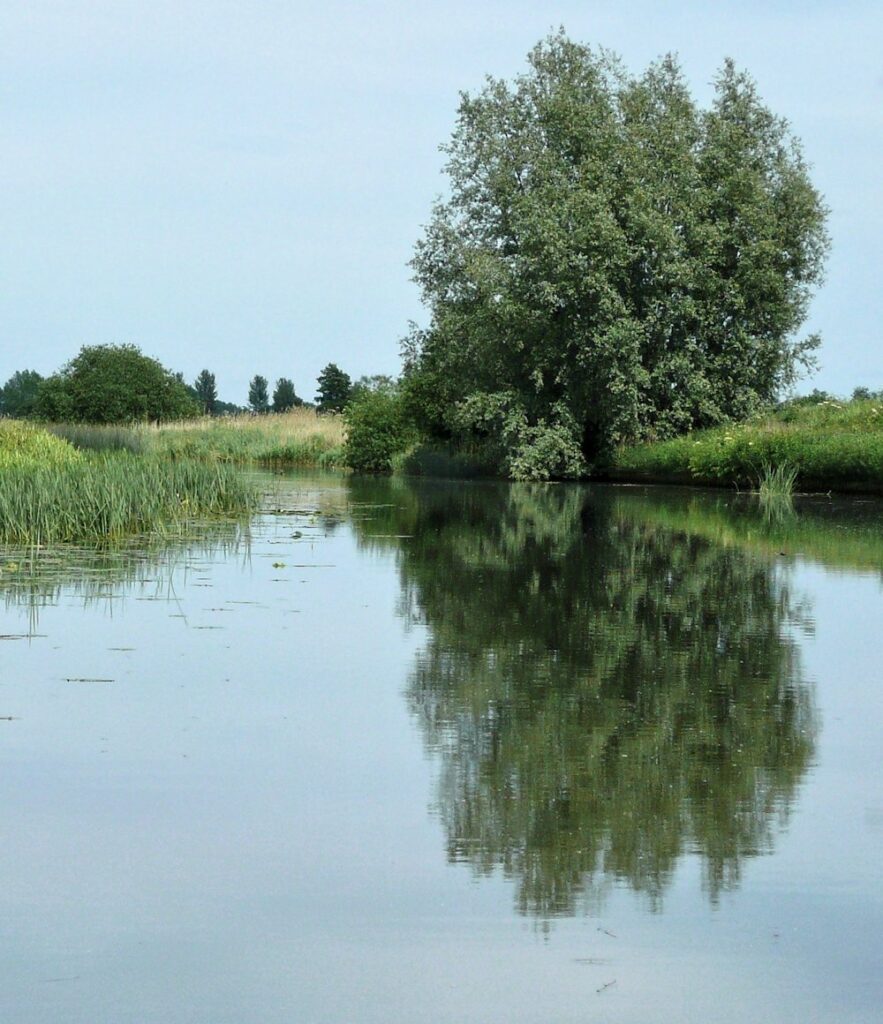
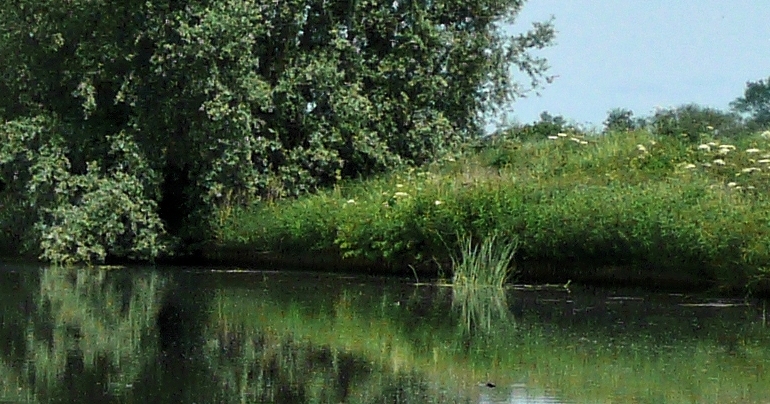
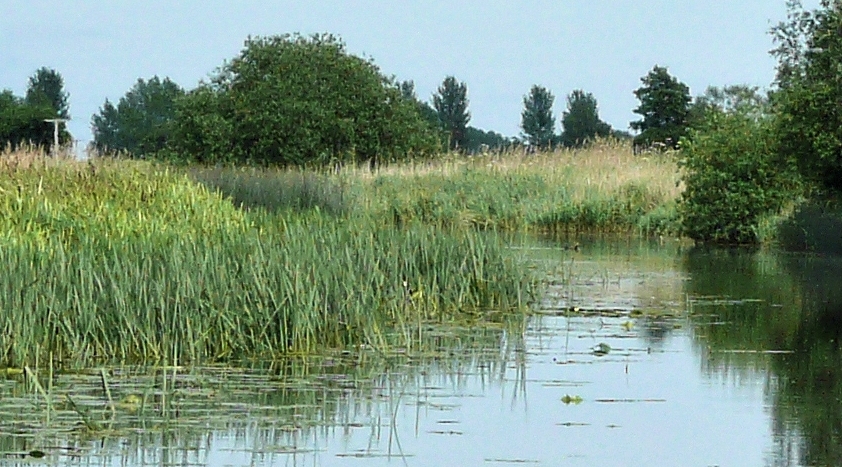
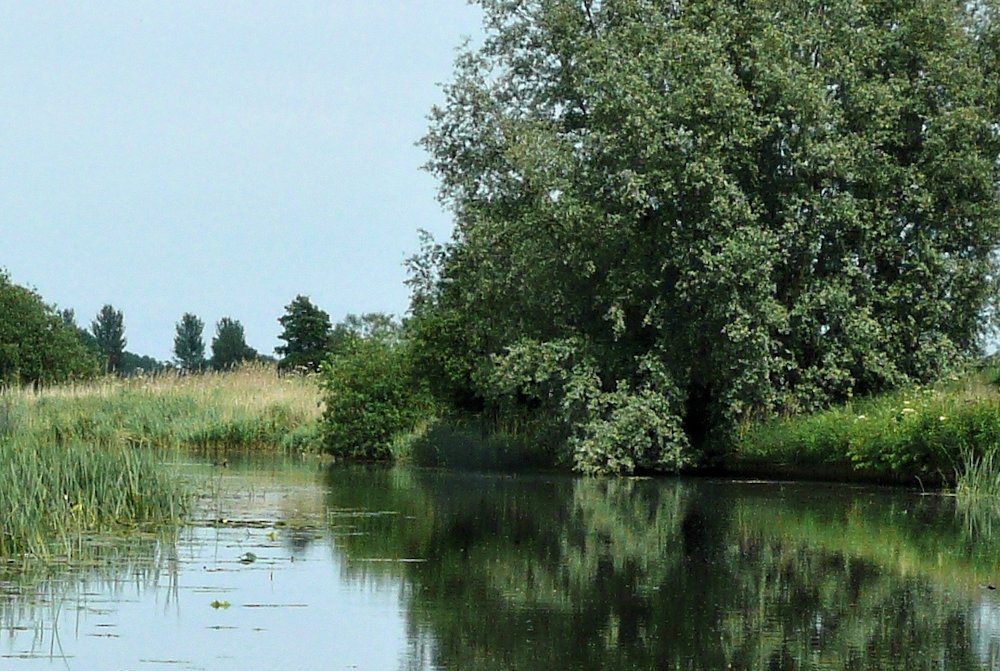
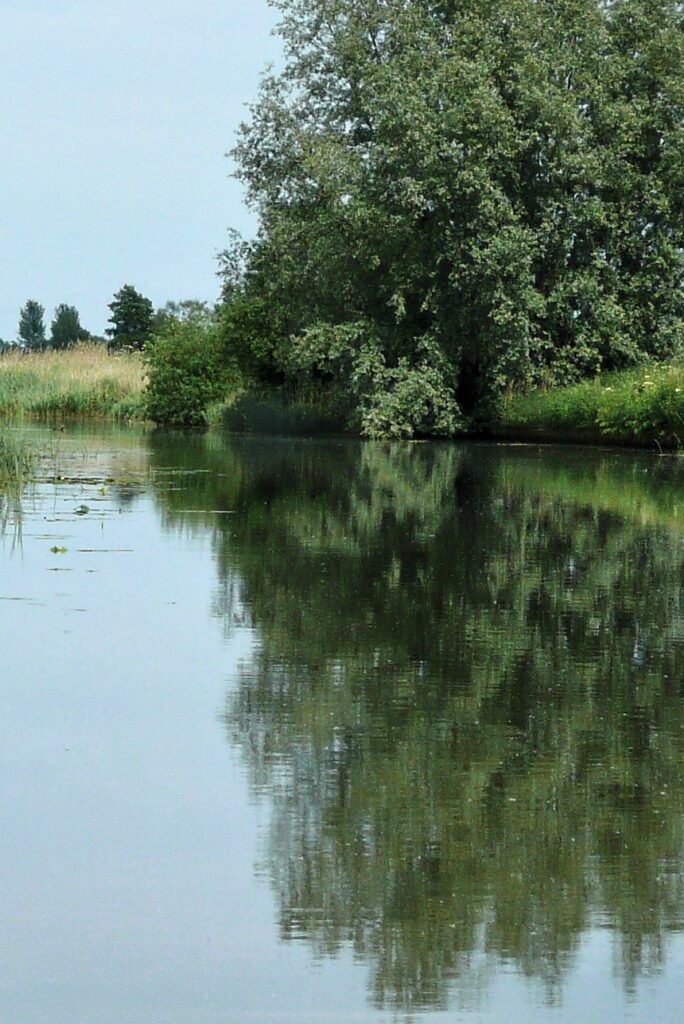
I am forced to admit this photo was taken from a boat and not the bank but the various crops show the great choice we have from the quite dark composition of crop 4 to the light airy feel of the original photograph.
Start to think in terms of shape and tone. Instead of thinking I am drawing a tree and its reflection say to yourself,” I can see a large dark oval shape. Below it is a similar dark shape that fragments into elongated light and dark shapes when the wind blows.” If you can stay long enough, observe different patterns on the water surface as a boat passes, and when there is wind or no wind. Try to translate these into drawing. Can you observe differences in size between ripples near you and those further away?
Observe and note whether there is a difference in tone between the sky and its reflection and do the same for reflected objects. As you can see from the photo taken on the Cam, the sky there was almost the same tone as its reflection but this is not always the case.
When you have found a composition that pleases you either paint or make a more considered drawing. Both the observation of the water surface and the composition exercise will be good preparation for the outside drawing/painting sessions.
Have fun and experiment!
Perhaps look at a few Impressionist paintings!
Your Drawings and Paintings:
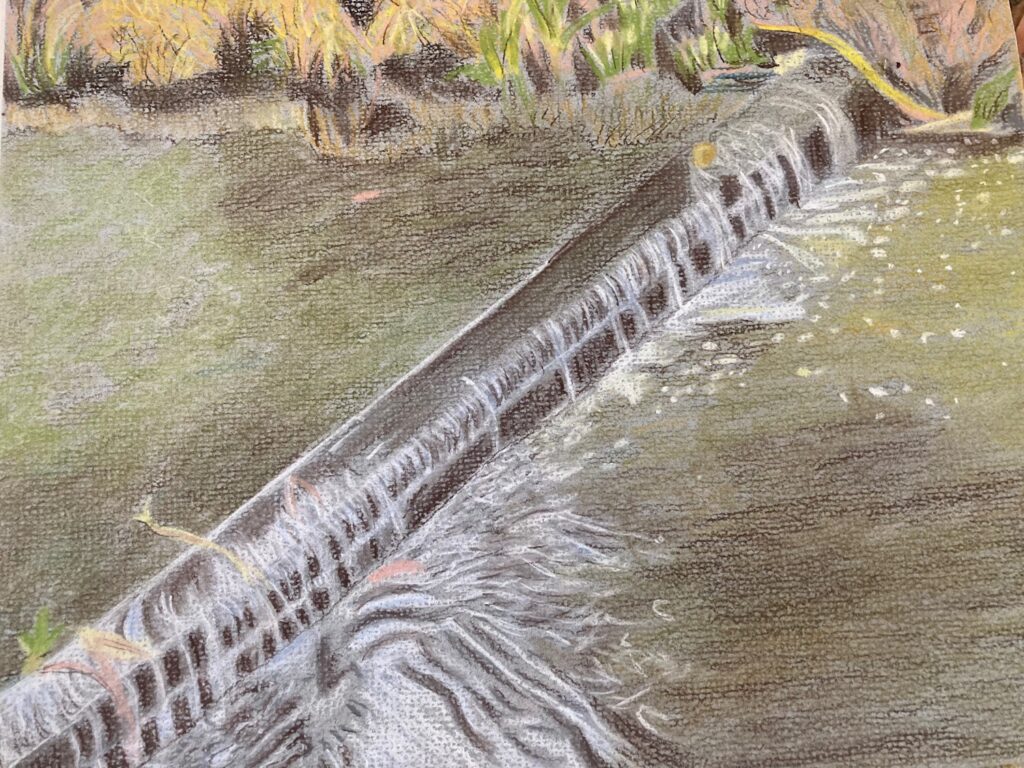
Pastel by Shane
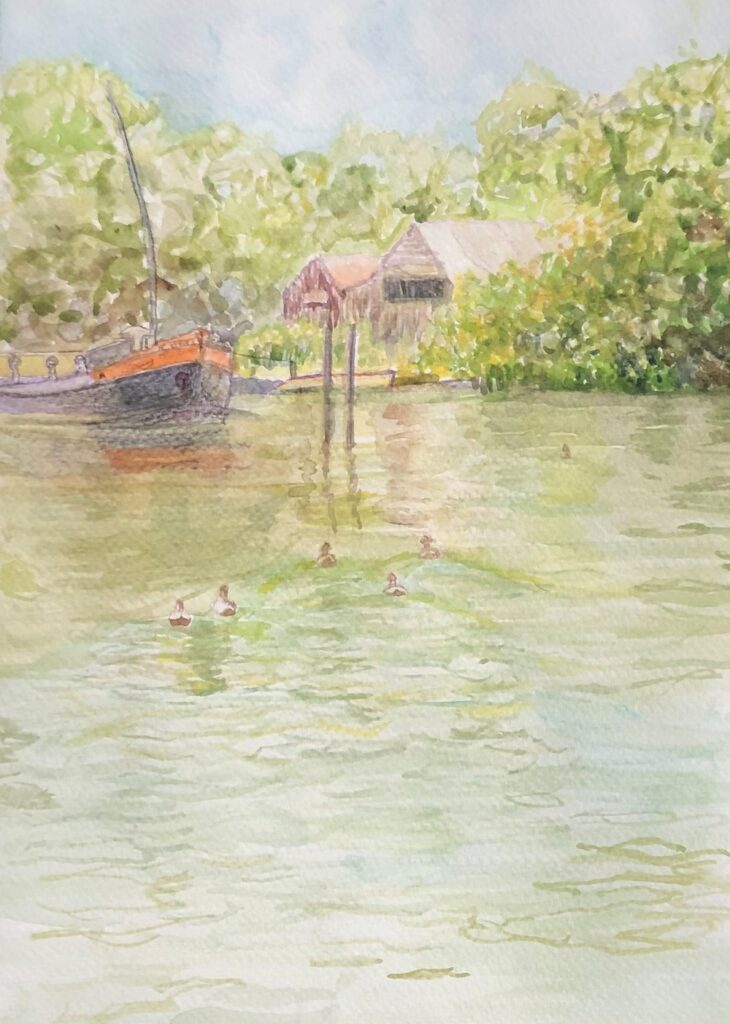
Watercolour by Virginia
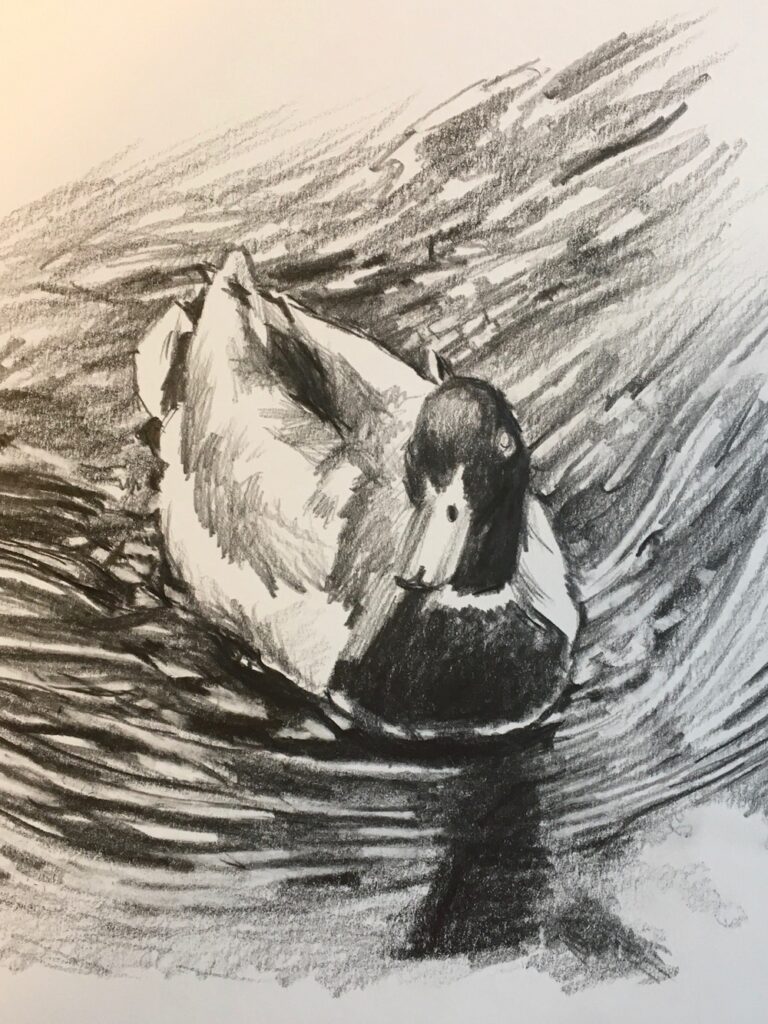
Drawing by Maryon
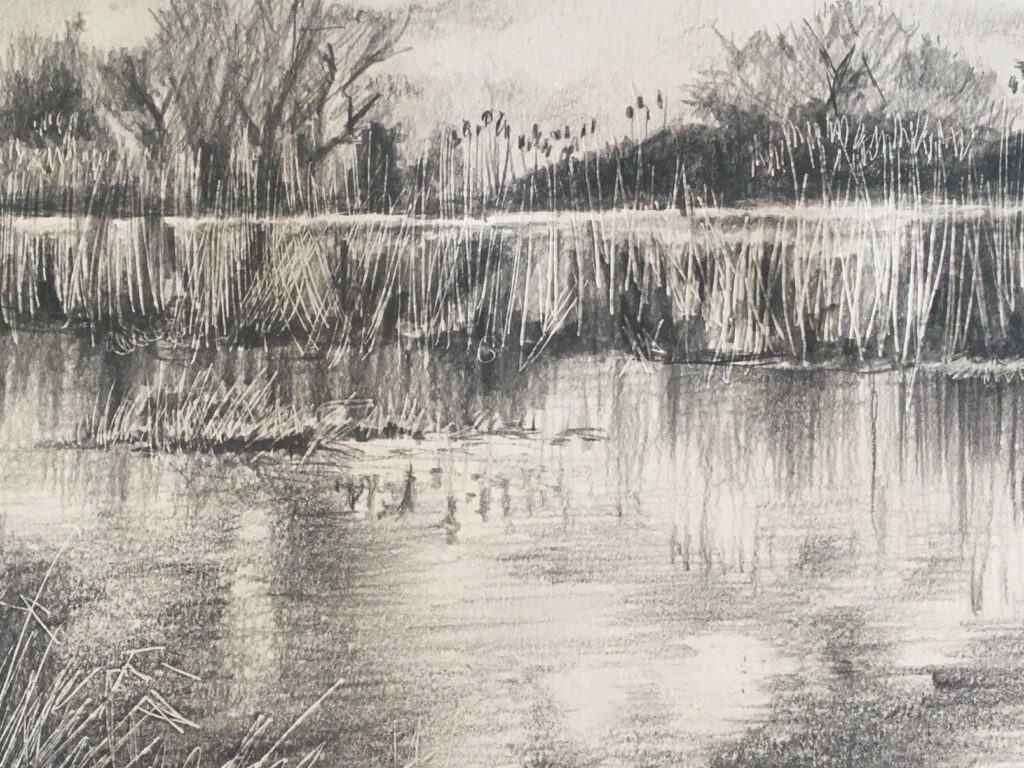
Drawing by maryon
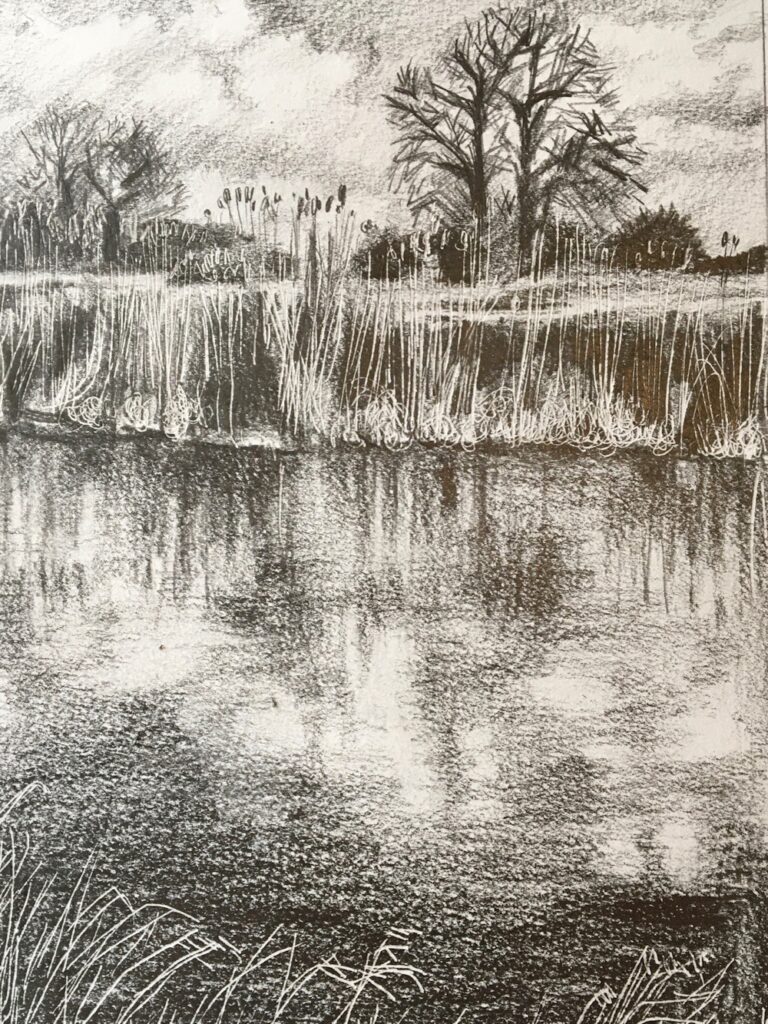
Drawing by Maryon
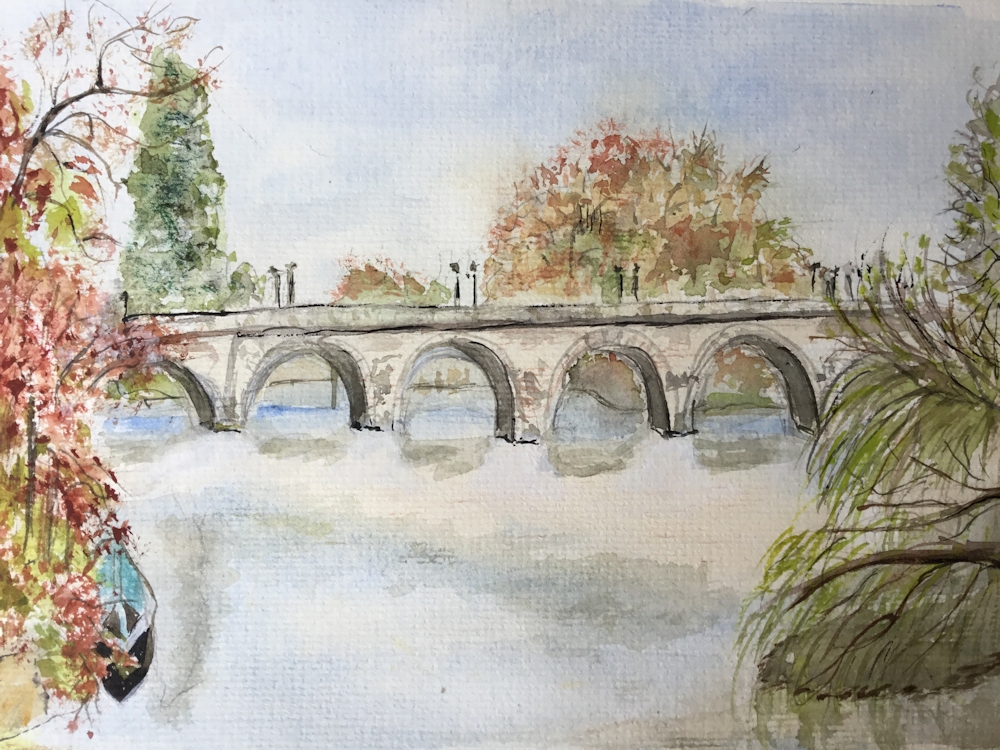
Watercolour by Ann
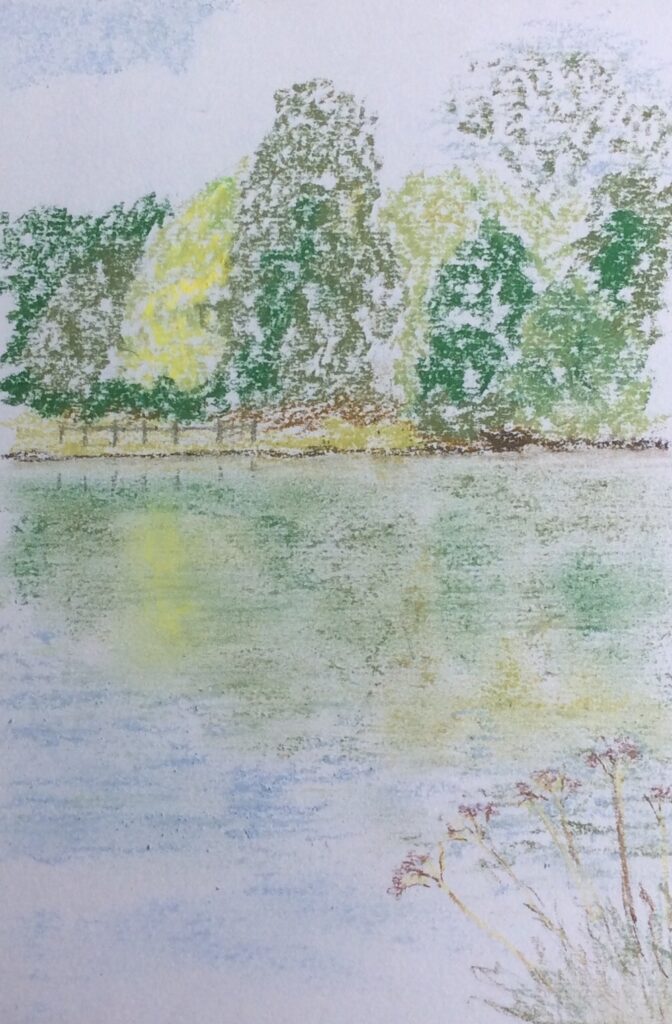
Pastel by Barbara
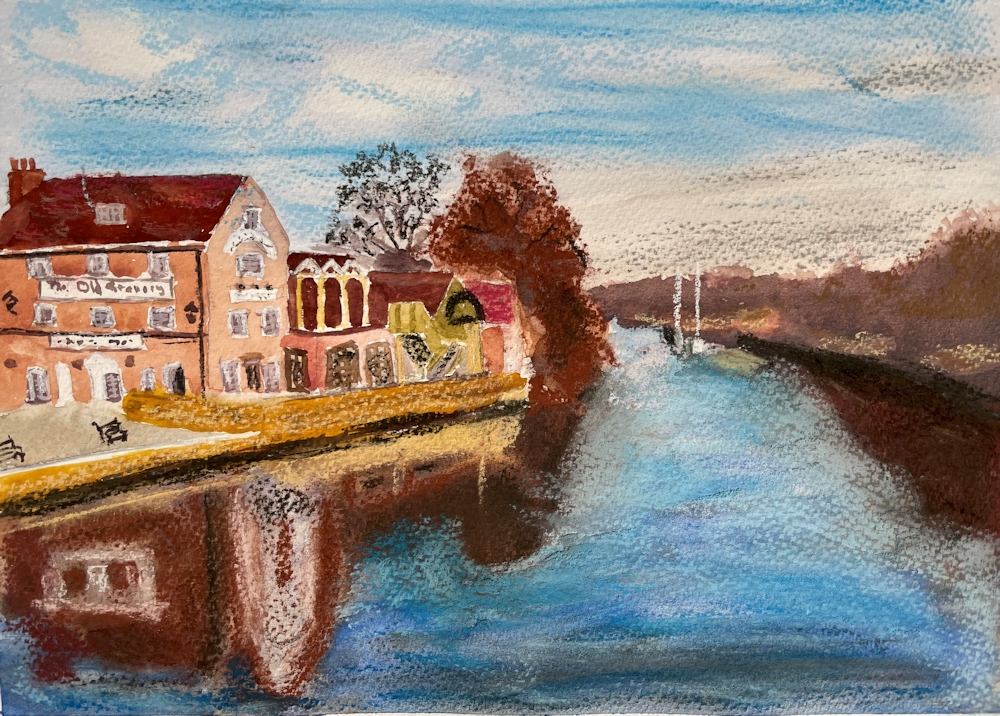
Watercolour and Pastel by John
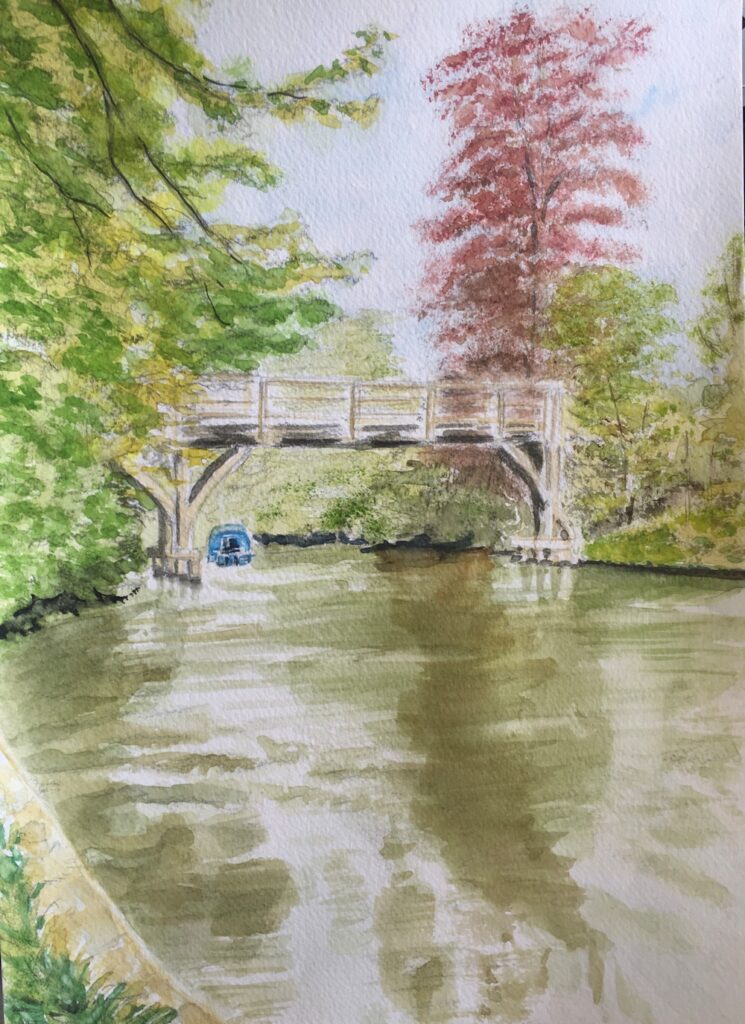
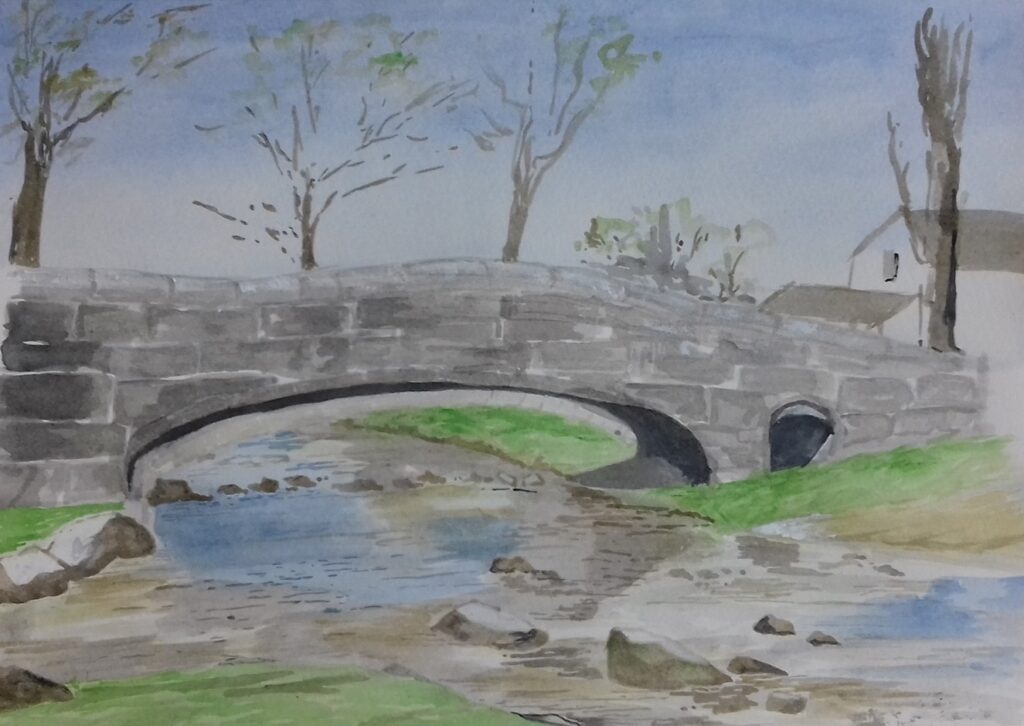
Watercolour by Liz
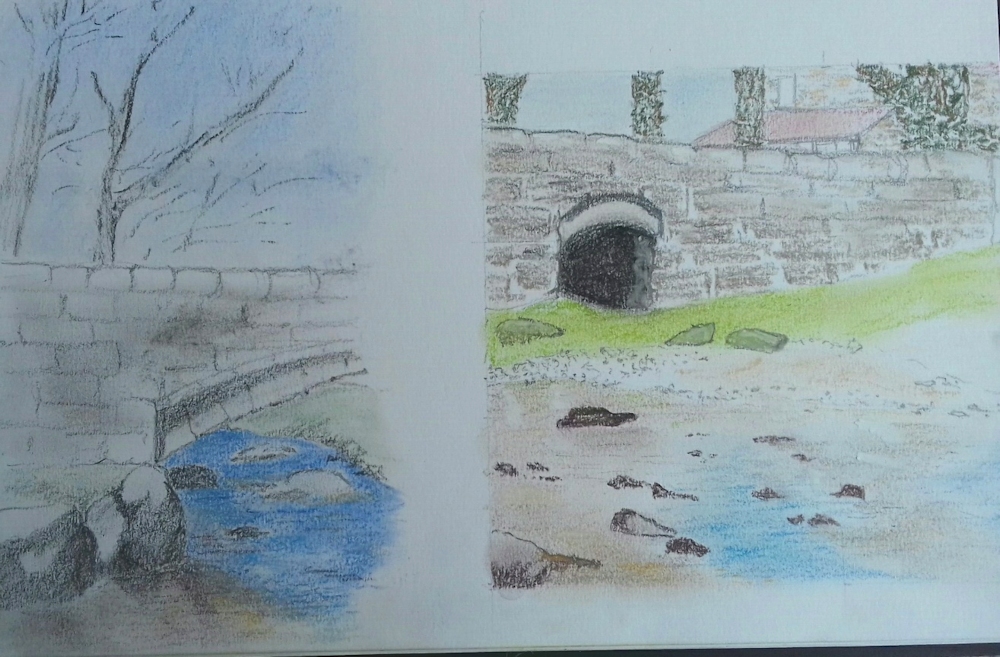
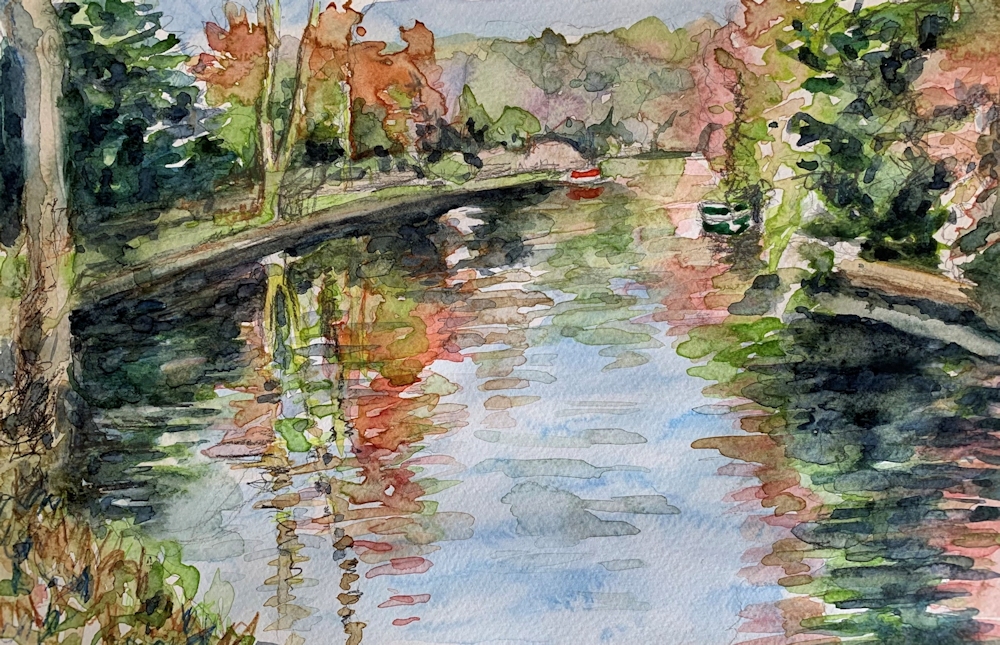
Watercolour by Jan
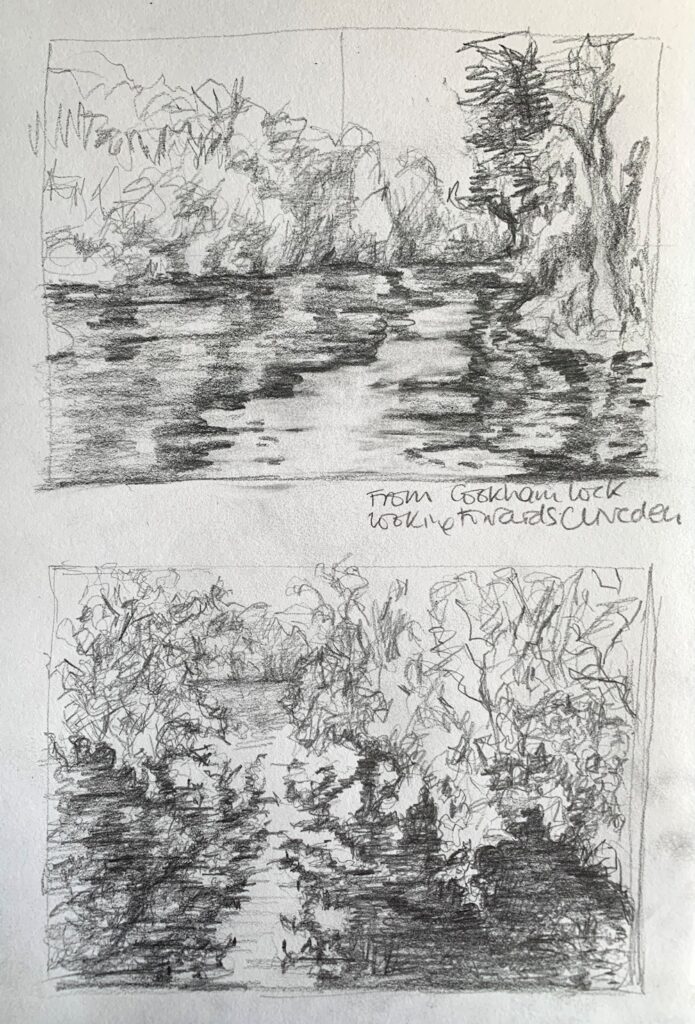
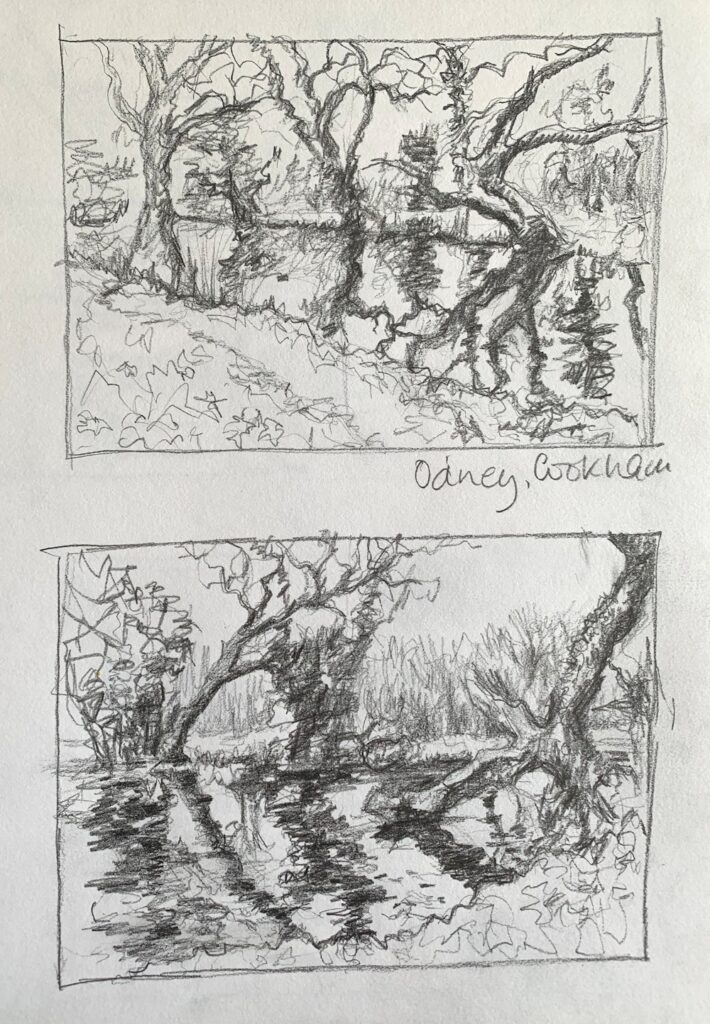
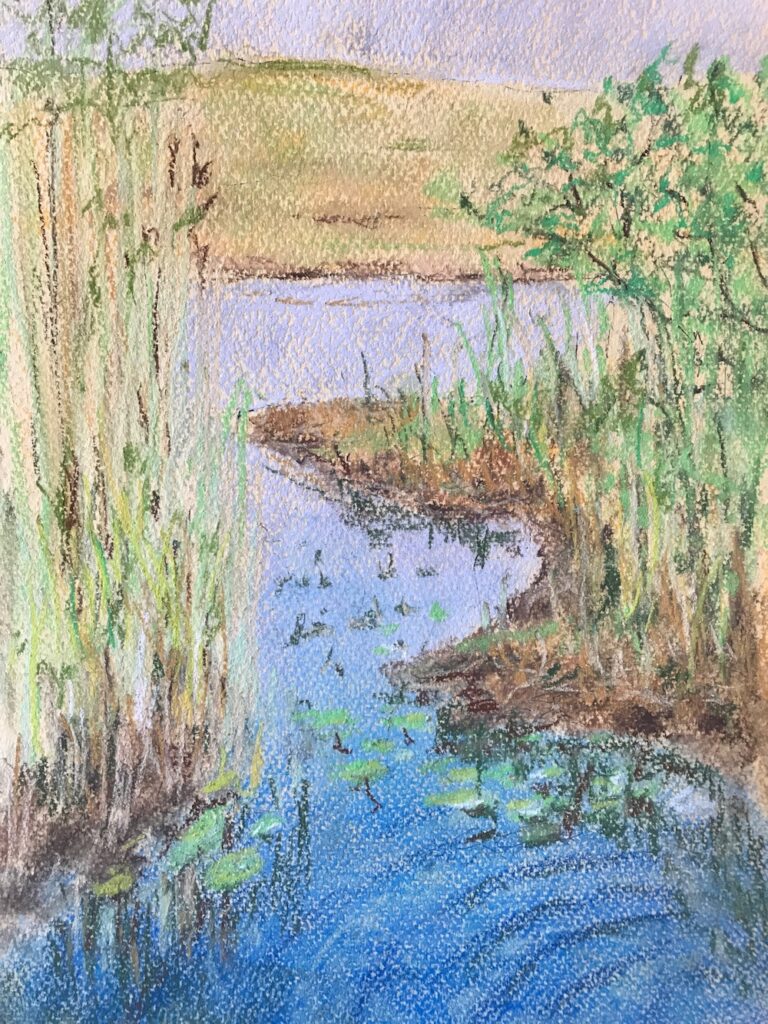
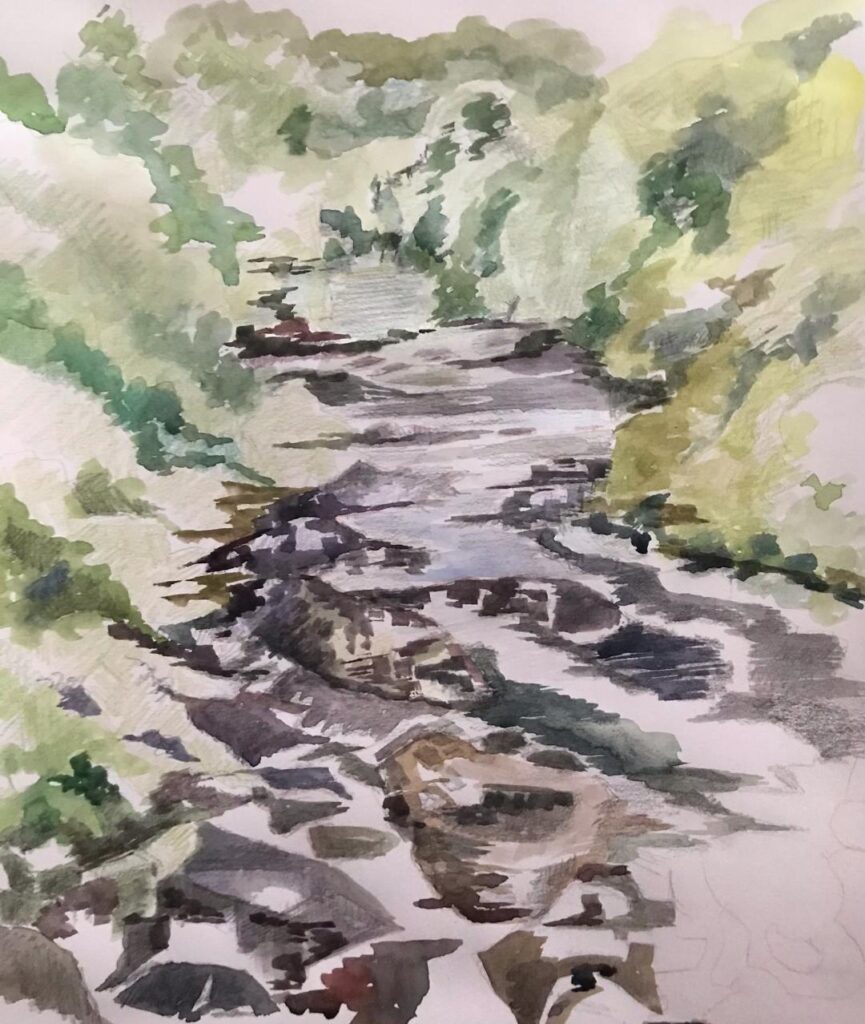
Coloured pencil and watercolour by Sarah

Watercolour by Sarah